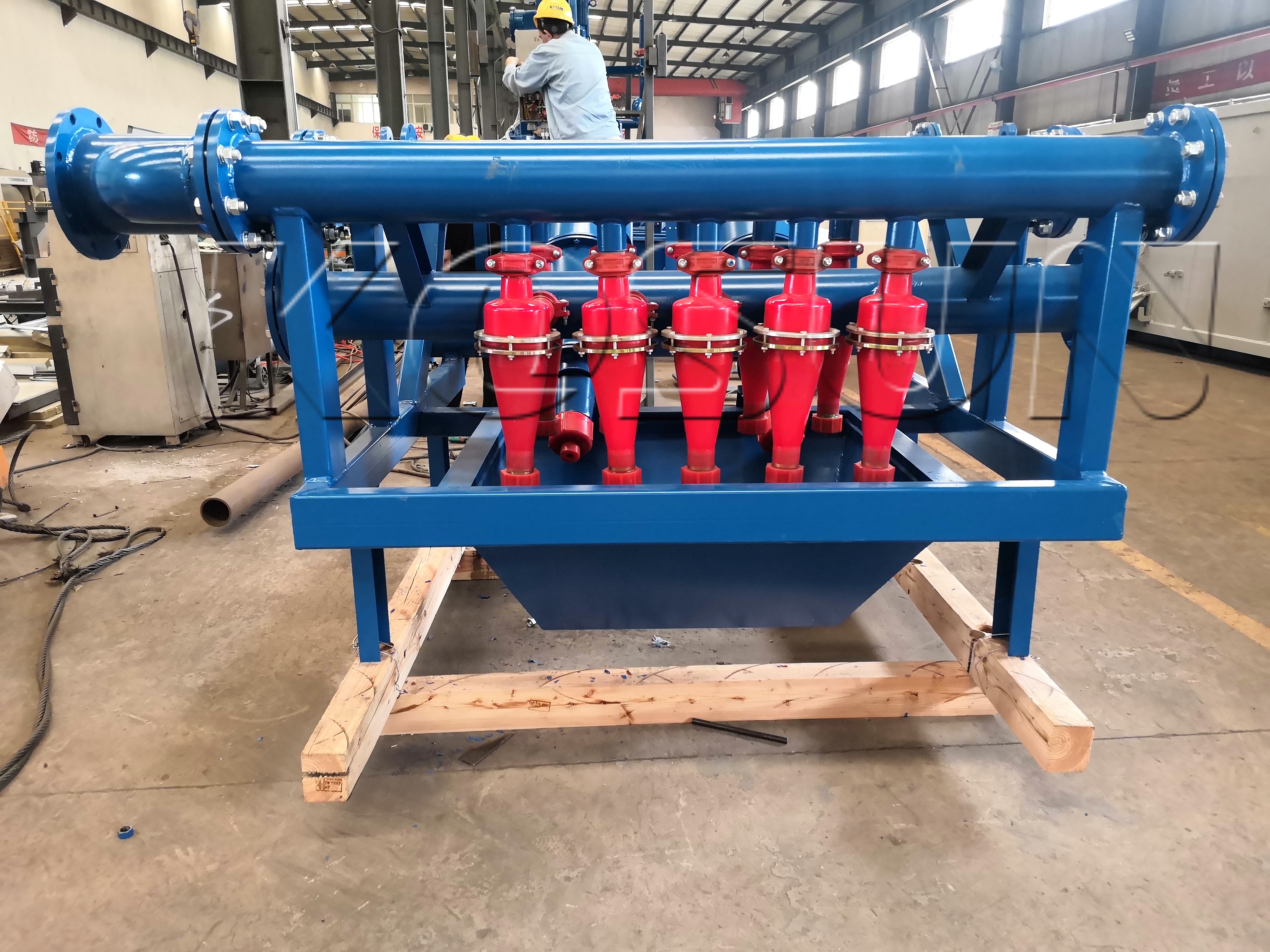- Home
- Products
-
-
Solids Control Equipment
- Linear Motion Shale Shaker
- Decanter Centrifuge
- Mud Cleaner
- Vacuum Degasser
- Centrifugal Pump
- Shear Pump
- Submersible Slurry Pump
- Mud Agitator
- Mud Gun
- Jet Mud Mixer
- Desilter
- Water Tank
- Mud Tank
- LS1850 Shale Shaker
- Diesel Tank
- MD210 Drilling Mud Cleaner
- Balanced Elliptical Motion Shale Shaker
- Oilfield Drilling Mud Desander
-
Solids Control System
- Drilling Mud Cooling System
- Solids Control System
- Mobile Solids Control System
- Arctic Solids Control System
-
TBM
- Tunnel Boring Mud System
-
HDD
- HDD Mud Recovery System
-
-
- News
- Services
- Marketing
- About Us
- Contact Us
- Videos
Home > KOSUN News >
Introduction of cyclone for solid phase control of drilling fluid
Aug 29, 2024
The hydrocyclone for solid phase control of drilling fluid is a vertical conical vessel with a cylindrical part, and its structure is shown in the figure. The cylindrical part of the upper part of the cone is the slurry inlet chamber, the inner diameter of which is the specification size of the cyclone, and the side part has all the grouting inlet; There is a vortex duct in the top center to form the overflow port. The lower part of the shell is conical, and the cone Angle is 150 ~ 200°. The opening at the bottom is called the bottom flow opening, and its caliber is adjustable.

How it works:
Under the action of pressure, the drilling fluid containing solid particles enters the cyclone along the tangential direction from the inlet. In the process of high-speed rotation, the larger and heavier particles are thrown towards the wall under the action of centrifugal force, spiral down along the shell, and discharged through the bottom flow port. The swirling liquid containing fine particles will change direction near the bottom, form an internal spiral upward movement, and discharge through the overflow port. In this way, there are two spiraling streams of fluid in the cyclone at the same time, one with a large number of coarse particles spiraling downward, and the other with finer particles spiraling upward along with a column of air in the middle.
Use and regulation:
At present, most of the hydrocyclones used for solid control of drilling fluid are balanced hydrocyclones. If the size of the bottom flow port of the cyclone is properly adjusted, the pure liquid will be discharged from the overflow port when it is fed to the cyclone. When a liquid containing a separable solid phase is input, the solid will be discharged through the bottom flow port, and the surface of each discharged solid particle is adhered to a liquid film. The size of the bottom orifice at this time is called the equilibrium point of the cyclone.

If the opening of the bottom flow is adjusted to be smaller than the opening of the equilibrium point, a dry conical sand layer will appear between the equilibrium point and the actual bottom flow. When the finer particles pass through the sand layer, they will lose the liquid film on their surface and cause blockage of the bottom flow. This unreasonable adjustment is usually called "dry bottom" and the failure caused by "dry bottom" is called "dry plugging". If the opening of the bottom flow is greater than the inner diameter corresponding to the balance point, then a part of the liquid will be discharged from the bottom flow, this adjustment is called "wet bottom". In practice, the ideal balance point is difficult to adjust and maintain. In the case of only two options of "dry bottom" and "wet bottom", it is still better to choose the latter. As long as the flow loss is not serious, it can be regarded as normal. In the ideal operation of the cyclone, there are two streams of fluid flowing opposite each other at the bottom flow port. One of them is the inhalation of air, and the other is the thick slurry containing solid phase in an "umbrella" discharge. Only in this working state can the effectiveness of the cyclone be fully brought into play. The reason why the air is sucked is that the high speed motion of the upward swirl beam forms a low pressure area in the swirl zone, and the sucked air and the upward swirl beam flow out from the overflow port. When the solid phase content in the drilling fluid is too large, resulting in the amount of separated solid phase exceeds the maximum allowable flow rate of the cyclone, the bottom flow is discharged in a "rope" shape, and there is no air suction at the bottom flow port, so it is easy to clog. In this abnormal operating state, many solid particles within the cyclone clearance range will return to the overflow pipe and return to the drilling fluid system.
Under normal circumstances, the "rope" underflow can be overcome by adjusting the size of the bottom flow port, but when the solid particle input is seriously overloaded, the "rope" underflow of the cyclone is inevitable, and can only be prevented by improving the use of the vibrating screen or increasing the number of cyclone and other measures.


